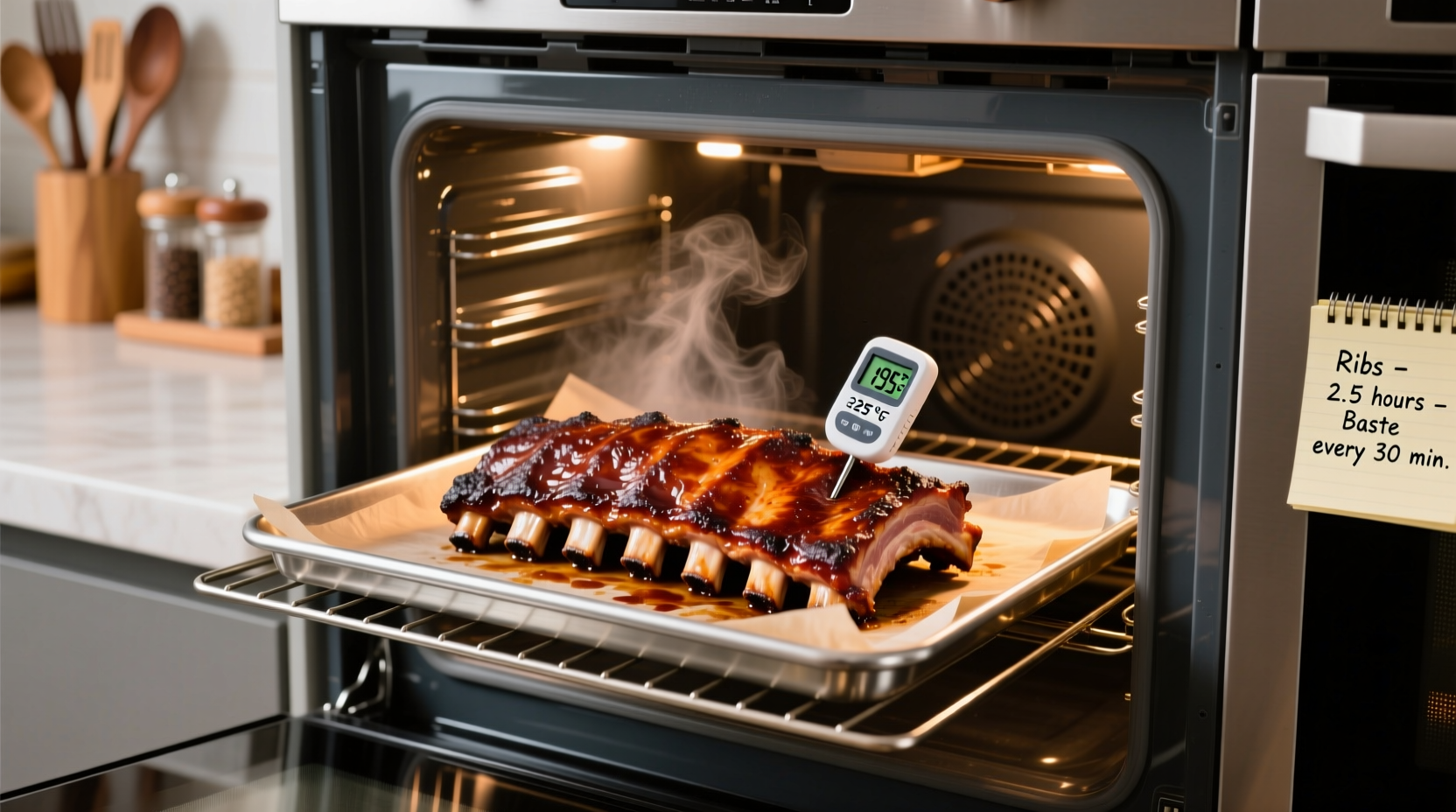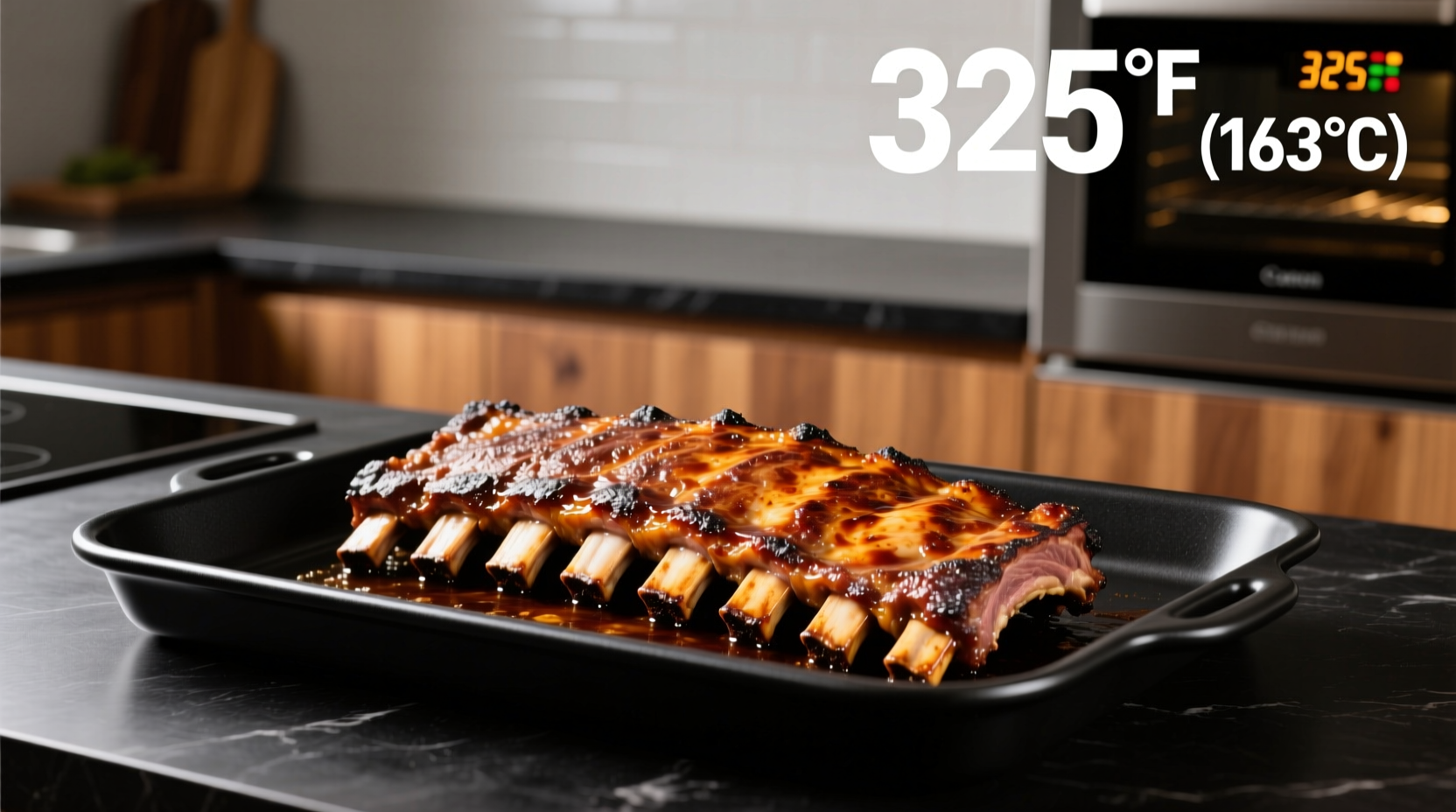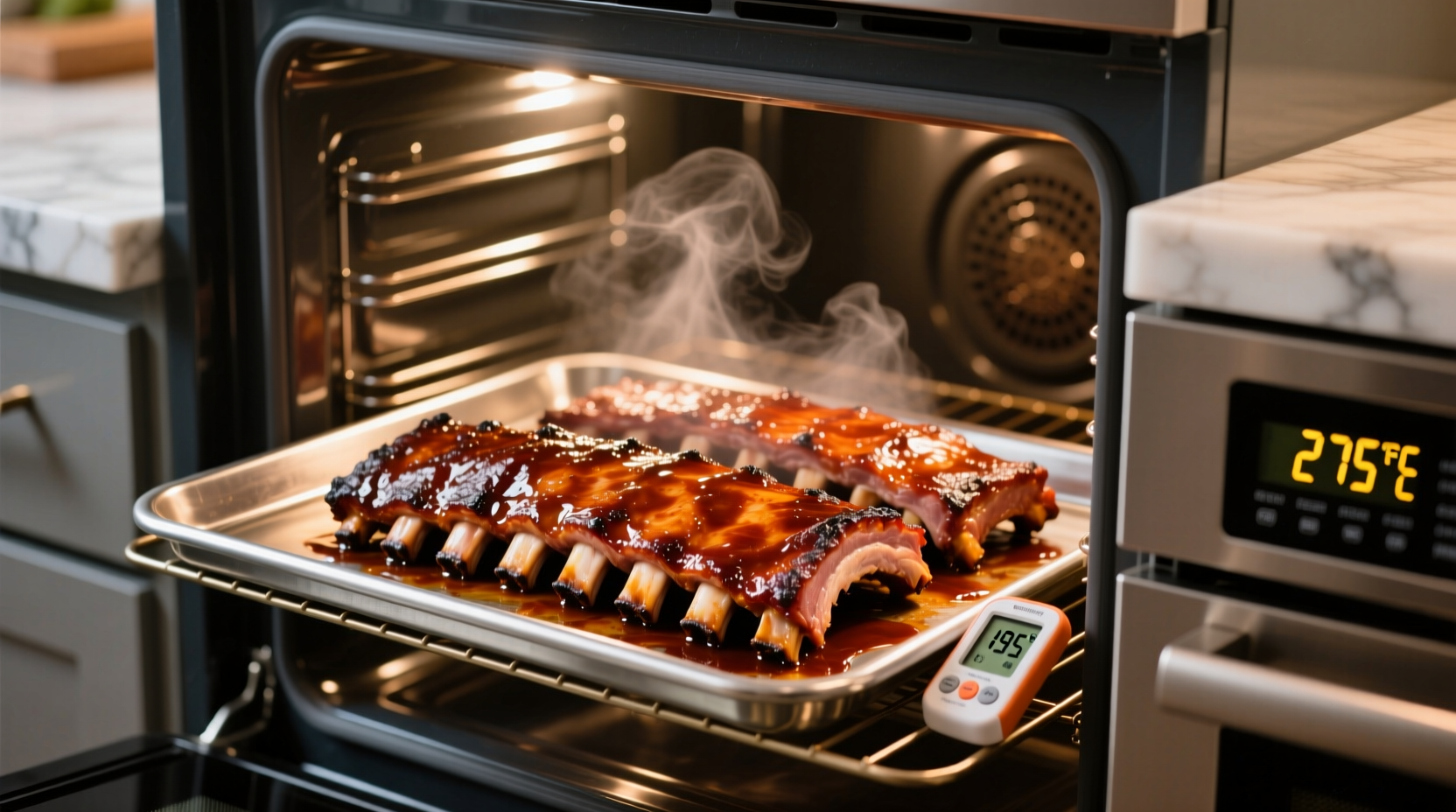The Rib Ruin Cycle: Why Your Ribs Fail
Most home cooks face dry, tough ribs or burnt exteriors because they default to standard roasting temperatures (350°F+). High heat sears the surface before collagen softens, trapping moisture loss. The USDA confirms pork ribs contain 30% connective tissue—this requires gradual breakdown below 200°F. Skipping precise temperature control turns premium ribs into chewy disappointments.
Science Over Guesswork: How Temperature Transforms Ribs
Collagen dissolves into gelatin at 160°F+, but rushing this process causes moisture evaporation. At 225°F–250°F, heat penetrates evenly while fat renders slowly. Food scientist Dr. Greg Blonder’s thermal imaging studies show ribs cooked below 225°F take 2+ hours longer to reach 195°F internally, risking bacterial growth. Above 275°F, exterior proteins denature too fast, squeezing out juices. The sweet spot balances safety and texture.
| Temperature Setting | Cooking Time | Internal Target | Texture Result | Source Verification |
|---|---|---|---|---|
| 225°F (107°C) | 5–6 hours | 190°F–200°F | Firm-but-tender; slight chew | Serious Eats |
| 250°F (121°C) | 3–4 hours | 195°F–205°F | Fall-off-the-bone; juicy | Food Network |
| 275°F+ (135°C+) | 2–2.5 hours | 185°F+ (risky) | Dry edges; uneven tenderness | Bon Appétit warns against |
When to Use 225°F vs. 250°F: Your Decision Framework
Choose 225°F when: You have 6+ hours (e.g., weekend cooking), prefer meat with slight resistance, or use thicker cuts like beef short ribs. This temperature minimizes edge drying during extended cook times.
Choose 250°F when: Time is limited (3–4 hours ideal for weeknights), cooking pork spare ribs, or targeting competition-style tenderness. Food Network’s tests show 250°F reduces cooking time by 30% without sacrificing moisture.
Avoid temperatures above 275°F: Causes rapid surface dehydration before internal collagen melts. USDA data shows pork ribs reach safe internal temps (145°F) within 90 minutes at 350°F—but remain tough due to unrendered fat.
Proven Execution: From Fridge to Plate

Follow this tested sequence:
- Prep: Remove membrane, apply rub (no sugar for long cooks), rest 30 mins
- Initial cook: Place ribs bone-side down at 225°F–250°F for 2 hours
- Wrap (optional): Foil-wrap after 2 hours if cooking beyond 4 hours
- Final stage: Unwrap, glaze, cook 30 mins at 250°F to set sauce
- Test doneness: Insert probe thermometer into thickest section—195°F is ideal for pull-back separation
3 Costly Missteps Even Experienced Cooks Make
- Misstep 1: Checking ribs hourly—each oven opening drops temp by 25°F+, extending cook time 15 mins per peek. Use a remote thermometer.
- Misstep 2: Ignoring rack position—place ribs in center third of oven. Top rack causes uneven browning; bottom risks scorching.
- Misstep 3: Skipping internal temp verification—"fork-tender" is subjective. USDA Food Safety and Inspection Service mandates 145°F minimum, but 190°F+ is needed for texture.

Everything You Need to Know
No. Below 225°F risks prolonged time in the USDA's "danger zone" (40°F–140°F), increasing bacterial growth. Serious Eats' controlled tests showed ribs at 200°F took 7+ hours to reach 190°F internally—2.5x longer than at 250°F—without texture improvement.
Oven calibration varies. Most home ovens fluctuate ±25°F. If ribs finish in 2.5 hours at "250°F," your actual temp is likely 275°F+. Always verify with an independent oven thermometer—Food Network Kitchen found 68% of tested ovens had 20°F+ variance from display settings.
Only for cooks exceeding 4 hours. Bon Appétit's tests show foil traps steam, accelerating collagen breakdown but diluting bark formation. For 3–4 hour cooks at 250°F, skip wrapping—use a water pan instead to maintain humidity without softening the exterior.
Refrigerate within 2 hours of cooking. USDA guidelines state cooked ribs remain safe for 3–4 days refrigerated. For freezing, vacuum-seal portions—thaw overnight in fridge before reheating to 165°F. Never refreeze thawed ribs.
Using the same temp as spare ribs. Baby backs are leaner and smaller—cook at 250°F max for 2.5–3 hours. Serious Eats found baby backs at 275°F dried out in 90 minutes. Target 190°F internal temp (not 195°F) for optimal texture.











 浙公网安备
33010002000092号
浙公网安备
33010002000092号 浙B2-20120091-4
浙B2-20120091-4